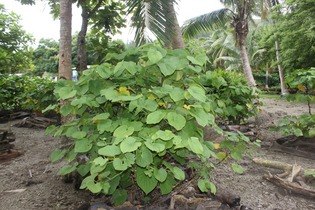Kava is an herbal supplement used primarily for its calming psychoactive effects. It is a traditional drink in Oceania that has been used for centuries. It has also been linked to liver toxicity and cases of liver failure and even death. However, the liver toxicity of kava is extremely controversial; this controversy, however, reflects the various narratives we see around “natural” products and can be very instructive.
A recent Tik Tok video warns of kava’s liver toxicity, and the comments are full of these dueling narratives. The pro-kava camp is well covered in this article: “Kava liver damage myth debunked by new WHO study.” However, many medical centers still warn of the potential for liver damage. The truth is somewhat complex and is not reflected in either the “myth debunked” narrative or the “never take kava” narrative. Rather, let me (not surprisingly) frame the controversy as a narrative of science-based medicine.
background
Kava is the common name of the plant Piper methysticum in the pepper family. Extracts from this plant, called kava or kava kava, have been used for at least centuries, possibly thousands of years, in Oceania. More recently, kava extracts have been marketed as herbal supplements in pill, powder, or drink (herbal tea) form.
Beginning in the 1990s, there were reports of liver failure, beginning in Europe, in people taking kava products. Initial case reports, case series, and reviews found that these cases are rare but usually extremely severe, with fulminant liver failure that in some cases results in the need for transplantation or death. This led to many national bans on kava products and general warnings against their use.
However, this only led to controversy, as many traditional kava users and promoters question the evidence. A 2007 WHO review (not a study), the one referenced above, came to some interesting conclusions (none of which amount to myth-busting). They refer to a single epidemiological study from 2004 that found no association between regular kava use in Oceania and liver disease, even in daily users. However, they also cite the extensive evidence of individual cases of liver failure associated with the use of kava products.
There are two main issues here. One is the difference in kava preparation. Traditional preparations use a water extract, and there are many reasons to hypothesize that the water extract version of kava is safer. It contains lower doses of active ingredients, may contain some protective chemicals (such as glutathione), and does not contain ingredients that may cause drug interactions with kava or exacerbate its liver toxicity. If we look at the case reports of liver damage, most (but not all) are in people who used kava products extracted with alcohol, not water, although there are some cases that used water extracts.
The second problem is that the data is muddy with many confounders. As the WHO says: “There are several possible reasons why hepatotoxicity can occur with kava, including the dose, the variety of kava, the parts of the plant used, or the type of extract. It is likely that the main problem is related to the chemical composition of the kava product taken.” We also have poor control over the total dosage of various active ingredients, contaminants, adulterants and drug interactions (including herbal products).
At present it is fair to say that there is possible liver toxicity from kava products. However, traditionally prepared water extracts are probably safe as used, although it is difficult to draw a firm conclusion from one study. There is still a strong case for the rare liver toxicity of kava products prepared for the Western market, mainly in pills and tablets.
However, all the reasons given by kava advocates for doubting that kava itself is causing liver damage are actually an indictment of the supplement industry itself. First, if you have liver failure, you probably don’t care much whether it was from the product itself, a contaminant, a substitution, or an interaction.
Nor are these defenses of herbal products in general or kava in particular. They indicate the real risk of herbal products: they are poorly regulated, scrutinized and understood. They are full of contaminants and substitutions and have poorly regulated and measured doses. It is not rational to use these limitations and risks of herbal products to avoid toxicity testing because they introduce uncertainty. Uncertainty is the problem.
Also, as we see in Tik Tok comments and kava advocates, it is often said that the toxicity of Western brands of kava says nothing about the risks of traditional use. But also: the safety of traditional use says nothing about the safety of Western kava products where the preparations are different and the doses tend to be more concentrated. It cuts both ways.
In the end there are still reasons to be cautious about using kava products (outside of traditional use). Herbal products are poorly researched and regulated medicines. They have real risks and side effects of medications. Kava is a great example of why herbal products should not be considered generally safe.
#Kava #liver #damage
Image Source : sciencebasedmedicine.org
